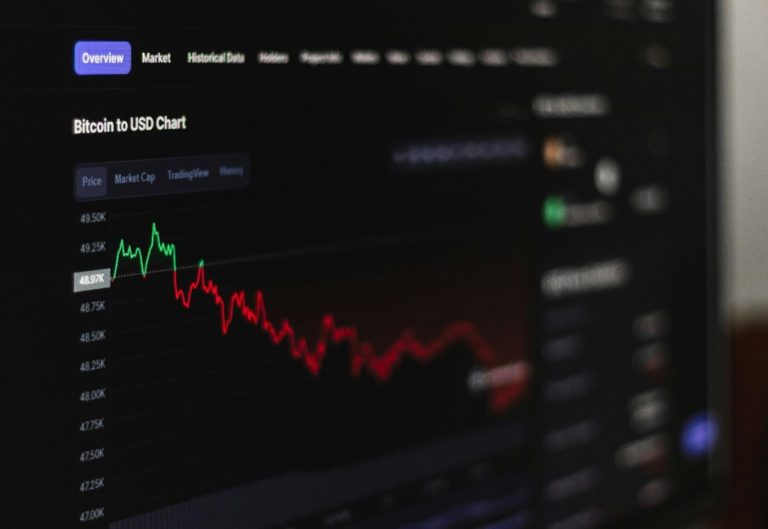
Introduction
Cryptocurrency has transformed the financial world, offering new ways for investors and traders to engage with digital assets. One of the more advanced and sophisticated methods of trading in this space is futures trading. Unlike spot trading, where assets are bought and sold instantly, futures trading involves agreements to buy or sell an asset at a predetermined price at a specific time in the future. This strategic form of trading enables participants to speculate on price movements without actually owning the underlying cryptocurrency.
The growth of futures trading in crypto markets has been explosive. A 2024 report by CoinMarketCap revealed that futures contracts now account for over 50% of total cryptocurrency trading volume. Platforms like Binance Futures, Bybit, and Shift +17X Hiprex have played significant roles in popularizing this trading method. Futures trading offers enhanced flexibility, leverage opportunities, and the ability to profit from both rising and falling markets. However, it also demands a profound understanding of the market, meticulous risk management, and emotional discipline. This article dives deep into the mechanics, strategies, benefits, and risks of futures trading in cryptocurrency.
Understanding Futures Trading in Cryptocurrency
What is Futures Trading?
Futures trading involves entering into a contract to buy or sell a cryptocurrency at a predetermined price on a set date. Traders speculate on whether the price will rise or fall and position themselves accordingly.
Key features include:
- Leverage: Allows traders to control a large position with a relatively small amount of capital.
- Short and Long Positions: Traders can profit whether the market moves up or down.
- Settlement: Contracts can be settled physically or in cash, depending on the exchange.
Why Futures Trading is Attractive in Crypto Markets
Several factors contribute to the allure of futures trading:
- Enhanced Profit Potential: Leverage magnifies gains.
- Risk Management: Futures can be used to hedge against spot market holdings.
- Market Access: Available 24/7 with deep liquidity on major platforms.
Platforms like Shift +17X Hiprex offer advanced futures trading solutions with adjustable leverage, multiple contract types, and sophisticated risk management tools, making them ideal for both novice and experienced traders.
Effective Strategies for Crypto Futures Trading
Long and Short Strategies
- Going Long: Buying futures contracts expecting the cryptocurrency price to rise.
- Going Short: Selling futures contracts expecting the price to fall.
Example: During the 2021 Bitcoin rally, traders who went long on BTC futures saw remarkable profits as Bitcoin surged past $60,000.
Hedging Strategies
Hedging involves holding offsetting positions to protect against adverse price movements.
Case Study: In early 2022, many investors hedged their spot Bitcoin holdings with short futures positions to mitigate losses during the crypto market downturn.
Risk Management Techniques
- Using Stop-Loss Orders: Predetermined exit points limit potential losses.
- Position Sizing: Avoid overexposure by limiting the size of each trade.
- Risk-Reward Ratio: Maintain a favorable ratio, targeting at least 2:1.
Platforms such as Shift +17X Hiprex provide in-built tools to set stop-losses, monitor margins, and automate trade management, empowering users to control risks effectively.
Pros and Cons of Futures Trading
Pros:
- Ability to profit in both bull and bear markets
- Access to leverage for amplified returns
- Flexibility for sophisticated trading strategies
Cons:
- Increased risk due to leverage
- Complex for beginners
- Potential for significant and rapid losses
Important Note: Traders should thoroughly educate themselves and start with low leverage to minimize initial risks.
Conclusion
Futures trading in cryptocurrency is an advanced technique that offers immense profit potential and strategic flexibility. However, it demands a strong grasp of market dynamics, effective risk management practices, and emotional control. The amplified risks associated with leverage mean that a single miscalculation can lead to significant losses.
Using reliable platforms like Shift +17X Hiprex can dramatically improve the trading experience. Their intuitive interface, robust risk management features, and real-time data analysis tools make them a valuable ally for futures traders looking to succeed in the dynamic crypto environment.
Ultimately, futures trading is not suited for everyone. It requires dedication, continuous learning, and strategic finesse. Those willing to invest the time and effort can leverage this powerful trading method to potentially achieve substantial financial success in the rapidly evolving world of cryptocurrency.
FAQs
What is the minimum amount needed to start futures trading in crypto?
While some platforms allow starting with as little as $10, it is recommended to begin with at least $500 for meaningful risk management.
What leverage should beginners use in crypto futures trading?
Beginners are advised to use low leverage, such as 2x or 3x, to minimize the risk of rapid liquidation.
Can I trade crypto futures 24/7?
Yes, cryptocurrency futures markets operate 24/7, offering continuous trading opportunities.
How is futures trading different from spot trading?
In spot trading, you buy and own the asset directly, while in futures trading, you speculate on price movements without owning the asset.
Are there risks in futures trading?
Yes, the use of leverage can amplify both gains and losses. Proper risk management is crucial.
What are perpetual futures contracts?
Perpetual contracts have no expiration date, allowing traders to hold positions indefinitely while paying funding fees.
Which cryptocurrencies are best for futures trading?
Bitcoin (BTC), Ethereum (ETH), and Binance Coin (BNB) are popular due to their liquidity and trading volume.
Can I automate my futures trades?
Yes, many platforms, including Shift +17X Hiprex, offer bot integrations and automated trading features.
What is liquidation in futures trading?
Liquidation occurs when your margin balance falls below the maintenance level, causing the platform to automatically close your position.
How can I improve my success rate in futures trading?
Continuous education, practice with demo accounts, disciplined risk management, and strategic planning are key to success.

